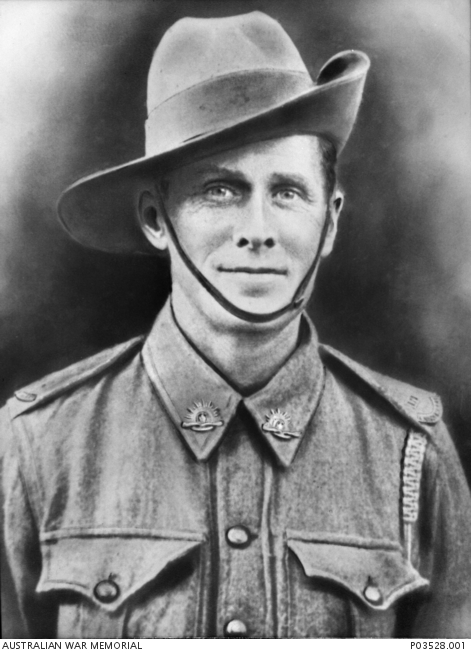Pte
Charles Ashby Hollingsworth
Information about birth
|
Year of birth: 1875 |
|
Place of birth: Birmingham, Warwickshire, England, United Kingdom |
General information
|
Last known residence: 156 Albion Street, Brunswick East, Victoria, Australia |
|
Profession: Labourer |
|
Religion: Church of England |
Army information
|
Country: Australia |
|
Force: Australian Imperial Force |
|
Rank: Private |
|
Service number: 3079 |
|
Enlistment date: 18/11/1916 |
|
Enlistment place: Melbourne, Victoria, Australia |
|
Units: — Australian Infantry, 37th Bn. (Last known unit) |
Information about death
|
Date of death: 04/10/1917 |
|
Place of death: Israel House - Rote Haus, Zonnebeke, Belgium |
|
Cause of death: Killed in action (K.I.A.) |
|
Age: 42 |
Memorial
|
Ypres (Menin Gate) Memorial Panel: 25 D |
Distinctions and medals 2
|
British War Medal Medal |
|
Victory Medal Medal |
Points of interest 4
| #1 | Place of birth | ||
| #2 | Last known residence | ||
| #3 | Enlistment place | ||
| #4 | Place of death (approximate) |
My story
Charles Ashby Hollingsworth was the son of Frederick and Helen Hollingsworth. He was born around 1875 in Birmingham, Warwickshire, UK. Charles emigrated to Australia in 1903. He lived in Brunswick East, Victoria with his wife Clara Ellen and their three children. Charles worked as a labourer. He enlisted in the Australian Army at the age of 41 in November 1916. He belonged to the 37th Battalion (10th Brigade, 3rd Division).
Charles fell on 4 October 1917, at the Battle of Broodseinde. On that day, the 37th Battalion attacked from starting positions along the Ypres-Zonnebeke road. Their starting line was near Van Isackere Farm, along today's Zonnebekestraat. Their first objective was to get past Springfield, along today’s Maarlestraat, to eventually push through to the Tyne Cot - Nieuwemolen line. Just before the start of the attack, the German troops opened a barrage. Indeed, they had also planned an attack. However, that barrage was ineffective and caused only a limited number of casualties. Shortly afterwards, Allied troops also opened a barrage, signalling the start of the attack. The 37th Battalion attacked amid a rain of shell and machine-gun fire. A lot of the enemy posts, from which the attacking troops were being shot at, were eliminated by the barrage or the attacking troops themselves. Quite a few German soldiers surrendered and were taken as prisoners. Upon reaching the objective, about 400 German soldiers had been captured and some eight pill boxes and dugouts were eliminated.
However, the 37th Battalion paid a high price for the attack: 47 killed, 159 wounded and 2 missing. One of the dead was Charles Ashby Hollingsworth. According to testimonies, he was hit by a shell or machine-gun bullet on reaching the first objective. He was buried the same day in a shell hole near Israel House. However, his grave was not recovered or identified after the war. His name is mentioned on the Menin Gate.
Charles fell on 4 October 1917, at the Battle of Broodseinde. On that day, the 37th Battalion attacked from starting positions along the Ypres-Zonnebeke road. Their starting line was near Van Isackere Farm, along today's Zonnebekestraat. Their first objective was to get past Springfield, along today’s Maarlestraat, to eventually push through to the Tyne Cot - Nieuwemolen line. Just before the start of the attack, the German troops opened a barrage. Indeed, they had also planned an attack. However, that barrage was ineffective and caused only a limited number of casualties. Shortly afterwards, Allied troops also opened a barrage, signalling the start of the attack. The 37th Battalion attacked amid a rain of shell and machine-gun fire. A lot of the enemy posts, from which the attacking troops were being shot at, were eliminated by the barrage or the attacking troops themselves. Quite a few German soldiers surrendered and were taken as prisoners. Upon reaching the objective, about 400 German soldiers had been captured and some eight pill boxes and dugouts were eliminated.
However, the 37th Battalion paid a high price for the attack: 47 killed, 159 wounded and 2 missing. One of the dead was Charles Ashby Hollingsworth. According to testimonies, he was hit by a shell or machine-gun bullet on reaching the first objective. He was buried the same day in a shell hole near Israel House. However, his grave was not recovered or identified after the war. His name is mentioned on the Menin Gate.
Sources 6
|
37th Australian Infantry Battalion, (Australian War Memorial, Campbell (AWM), AWM4 23/54/16). https://www.awm.gov.au/collection/C1338583 Sources used |
|
Australian Red Cross Wounded and missing Enquiry Bureau (Australian War Memorial, Campbell (AWM), RCDIG1048642). https://www.awm.gov.au/ Sources used |
|
British Army World War I Service Medal and Awards Rolls, 1914-1920 (The National Archives, Kew (TNA), WO 329). https://www.nationalarchives.gov.uk/ Sources used |
|
First Australian Imperial Force Personnel Dossiers, 1914-1920, (National Archives of Australia, Canberra (NAA), B2455, HOLLINGSWORTH C A). https://recordsearch.naa.gov.au/SearchNRetrieve/Interface/SearchScreens/BasicSearch.aspx Sources used |
|
McCarthy Chris, Passchendaele: The Day by Day Account, (London, Arms & Armour Press, 1995), p 110-113. Sources used |
|
Unit embarkation nominal rolls, 1914-18 War (Australian War Memorial, Campbell (AWM), AWM 8). https://www.awm.gov.au/ Sources used |
More information 4
|
Commonwealth War Graves Commission Database https://www.cwgc.org/find-records/find-war-dead/casualty-details/924272 |
|
Namenlijst (In Flanders Fields Museum) https://namenlijst.org/publicsearch/#/person/_id=36b450f0-791e-40ff-99fb-abb946b46b92 |
|
Lives of the First World War (Imperial War Museum) https://livesofthefirstworldwar.iwm.org.uk/lifestory/7485106 |
|
The AIF Project (UNSW Canberra) https://aif.adfa.edu.au/showPerson?pid=141165 |
